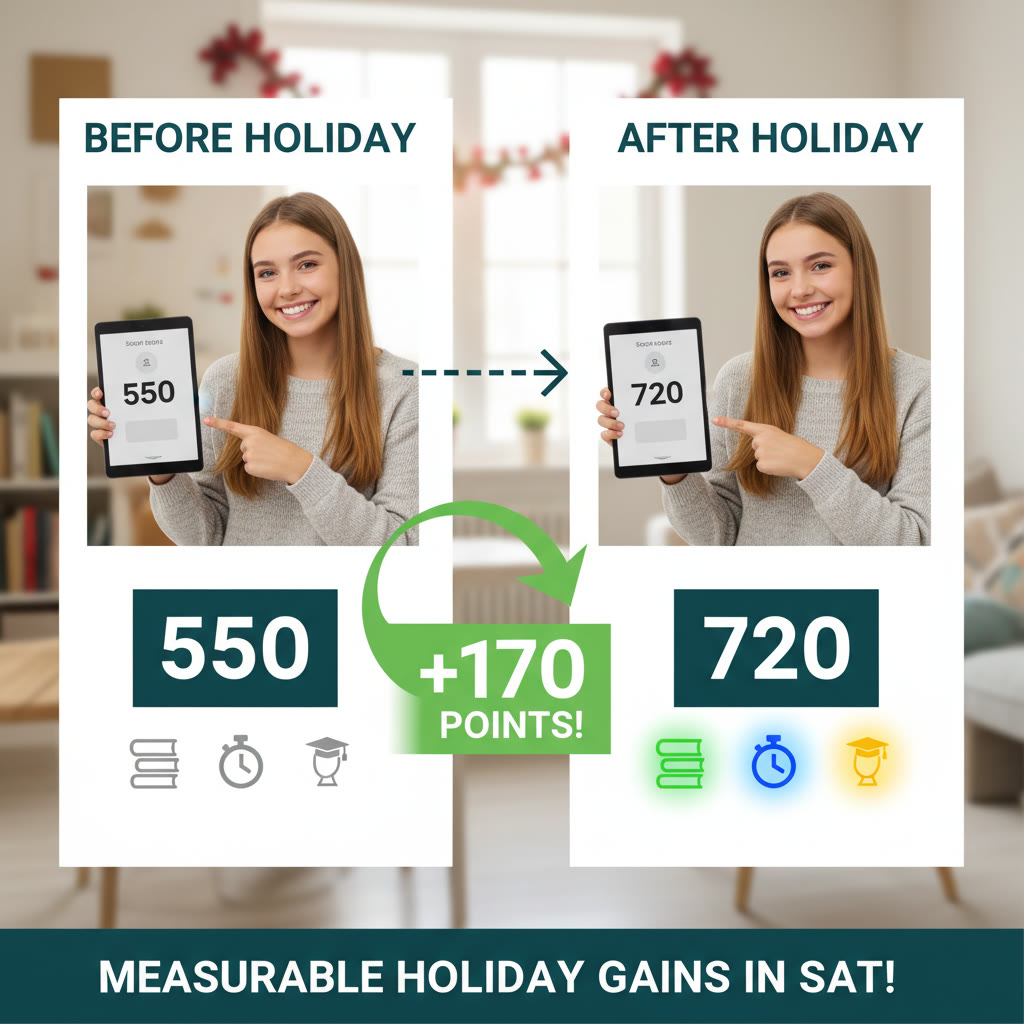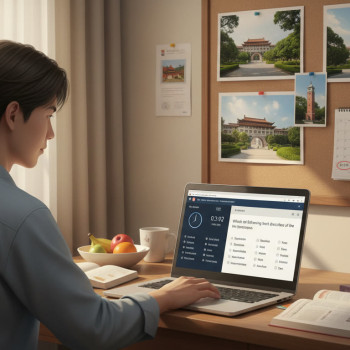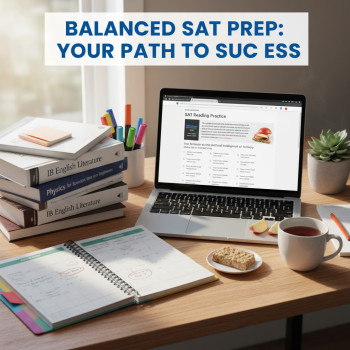Turn Holidays Into Your SAT Superpower
Holidays can feel like a double-edged sword when you are preparing for the SAT. On one hand, they break the rhythm of school and create precious free time. On the other hand, they bring family gatherings, travel, and the siren call of Netflix. The good news is you don’t need to choose between rest and progress. With a thoughtful approach, holidays can become your most productive study windows — compact, intense, and deeply rewarding.

A short note before we begin
This guide is practical, human, and deliberately flexible. It will help you map study blocks to different holiday types, avoid burnout, and extract the biggest score gains from limited time. If you want tailored adjustments — for example, personalized pacing for your target score or subject weaknesses — consider one-on-one guidance. Sparkl’s personalized tutoring offers tailored study plans, expert tutors, and AI-driven insights that slot into these holiday strategies naturally when you want a coach to refine the details.
Start by assessing your timeline and priorities
Before you decide how to use a holiday, take three simple inventory steps: know your test date, identify high-impact weaknesses, and estimate how much focused time you can realistically commit. This triad determines whether a break is best used for practice tests, skill building, or recovery.
- Test date: If your SAT is within 4–6 weeks after a holiday, prioritize full-length practice tests and targeted review.
- Weaknesses: If you struggle in one section, use longer holidays to shore up fundamentals; use short holidays for quick drills on problem areas.
- Available hours: Not every day will be perfect. Estimate your realistic average daily study time rather than ideal time. That helps set achievable goals.
Quick self-check
Write down your current practice score (or a recent school test), your target score, and the next two available SAT dates. That snapshot helps you pick the right holiday strategy and avoid wasted effort.
Map your holiday types to study priorities
Holidays come in various shapes. Here are practical blueprints for three common categories: long breaks (two or more weeks), medium breaks (4–7 days), and short breaks or single-day holidays.
Long breaks (two weeks or longer): Deep work and resets
Long holidays like winter break or summer vacation are perfect for significant gains because you have the time to cycle through focused learning, full practice tests, and deliberate review. Use a phased plan: diagnostics, skill blocks, and synthesis.
- Days 1–2: Diagnostic and planning. Take a timed, full-length practice test to identify weak areas. Spend time analyzing errors and building a prioritized study list.
- Days 3–10: Focused skill blocks. Break your day into 2–4 study blocks: math fundamentals, problem-solving strategies, reading comprehension practice, and essay planning (if applicable). Rotate subjects so you revisit each weakness multiple times.
- Days 11–14: Full practice tests and review. Take two full practice tests with full reviews. Focus on pacing, stamina, and error patterns rather than volume.
Long breaks also allow for tutor sessions or concentrated work with a mentor. If you opt for Sparkl’s 1-on-1 guidance, these weeks are perfect for a tailored sprint: expert tutors can build a targeted study plan, and AI-driven insights can track progress across each practice test.
Medium breaks (4–7 days): Intensive refinement
Short weeks like spring break are too short for a complete overhaul but ideal for targeted improvements. Choose one or two themes and lean in.
- Pick two high-impact focuses. Example: speed and accuracy on SAT Math, or evidence-based reading strategies and timing for Reading/Writing.
- Daily rhythm: 3–5 focused hours split into morning deep work and afternoon review drills. Include a practice section under timed conditions mid-break.
- End with a half-length or full-length test. A timed 2.5-hour practice test or a full test with extended review can tell you how much you improved and what to carry forward.
Short breaks and single-day holidays: Micro gains that add up
A single day off is not a wasted opportunity. Micro-sessions can move the needle if you use them smartly: targeted drills, strategy rehearsals, and short timed sections.
- 90–120 minute window: Do a timed Reading section or a focused math drill set, then spend 30 minutes reviewing mistakes.
- 30–60 minute window: Quick drills: 10 sentence correction problems, 12 algebra practice items, or a reading passage with annotation practice.
- Evening wind-down: Light review: vocabulary flashcards, note review, or a short reflection on strategy adjustments.
Sample holiday schedules: practical templates
Below are concrete templates you can adapt. Use them as starting points and tweak based on your test date and energy levels.
| Holiday length | Primary goal | Daily plan | Outcome measure |
|---|---|---|---|
| 2+ weeks (Winter/Summer) | Deep skill-building + 2 full tests | 3–4 hours: morning focused math, midday reading/writing drills, afternoon review + optional tutor session | 2 practice tests with error analysis and 1–2 clear skill improvements |
| 1 week (Spring Break) | Targeted refinement | 3–5 hours: day split into two skill themes, plus one half/full test on day 6 | Reduced mistake type frequency and improved pacing |
| 3-day weekend | Focused review of 1–2 weak areas | 2–3 hours/day: timed sections and error review | Observable reduction in repeated errors |
| Single-day holiday | Micro-practice and strategy rehearsal | 90–120 minutes: one full timed section + review | Improved confidence and immediate correction of common mistakes |
How to measure progress over a holiday
Progress isn’t just higher practice scores. Track: error types (algebra carelessness, misreading questions), timing (minutes left per section), and stamina (attention span through the final passages). Use a simple spreadsheet or notebook to log these across tests and see trends.
Study-block design: focus, variety, and recovery
Effective holiday study sessions are not about brute force. They are about deliberate design: alternating focused study with short breaks, mixing problem types, and including active review.
- Block length: 45–90 minutes for deep work, broken by 10–15 minute breaks. Use Pomodoro-style pacing if that helps concentration.
- Mix practice types: Start with targeted drills (e.g., quadratic equations or command of evidence), then switch to mixed-problem sets to practice transfer skills.
- Active review: After each timed section, spend as much time reviewing mistakes as you did on the section. Understanding why you missed questions is where the most durable improvement happens.
Examples of effective daily templates
Here are two templates you can copy and adapt depending on the holiday length and your energy rhythm.
- Morning-focused (best for long holidays):
- 8:30–10:30 — Math fundamentals and targeted problem sets
- 10:30–11:00 — Break
- 11:00–12:30 — Reading practice passages with annotation and timing
- 1:30–3:00 — Review and drill weak spots, optional tutor check-in
- Evening sprint (good for single-day holidays):
- 4:00–5:30 — One full SAT section under timed conditions
- 5:45–6:30 — Deep review of every missed question
- 7:00–7:30 — Light vocabulary or formula review
Practice tests: when and how to use them during holidays
Practice tests are your north star. They reveal scoring patterns, timing issues, and plan weaknesses. But the timing of tests during a holiday matters:
- Early diagnostic: On the first day of a long break, a full test sets a baseline and helps you design the rest of the break.
- Mid-break check: In the middle of a long break, a second practice test measures short-term improvement and helps prioritize the final days.
- End-of-break consolidation: One final test near the end consolidates gains and identifies what to keep working on when school resumes.
When you take a test, mimic test-day conditions: quiet room, timed sections, only allowed breaks, and no interruptions. Then spend at least as much time reviewing the test as you spent taking it. That deep review is where the highest leverage learning happens.
Use practice tests to simulate the real thing
During long breaks, simulate test-day logistics: wake up at your usual test time, eat the breakfast you plan to have on test day, and recreate any timing factors you expect. This trains both your mind and your body for the test day routine.
Keeping balance: family time, travel, and mental health
Holidays are also for rest and relationships. Productive SAT prep is sustainable only when balanced with sleep, movement, and social time. Here’s how to protect both productivity and sanity.
- Set clear boundaries: Block study times on your calendar and share them with family. Let them know these windows are quiet focus periods, and plan family activities around study breaks.
- Build in recovery: Schedule full no-study days or half-days. Recovery helps consolidate learning and prevents burnout.
- Be flexible during travel: Use travel time for lighter tasks — flashcards, listening to strategy podcasts, or mental rehearsal — and save heavy lifting for stable days.
- Sleep and nutrition: Prioritize consistent sleep and healthy meals. Cognitive work suffers rapidly when sleep is sacrificed for extra study hours.
When to pause
If you notice increasing irritability, declining practice-test scores, or constant fatigue, pause and reset. Short, deep breaks do more than marathon studying followed by crashes. The goal is durable improvement, not ephemeral exhaustion.
How personalized tutoring can enhance holiday sprints
Holidays are an exceptional time to use tutoring because progress can be concentrated and rapid. Personalized tutoring brings several advantages that fit organically into holiday plans.
- Tailored study plans: Tutors can convert your diagnostic insights into a day-by-day holiday schedule so you don’t waste a single study hour.
- 1-on-1 guidance: Real-time feedback accelerates correction of persistent errors, making a 90-minute session far more efficient than two hours of solo study.
- Expert strategy coaching: Tutors offer tactics for timing, guessing strategies, and section-specific tricks you might not discover on your own.
- AI-driven insights: When combined with modern tools, AI can spot trends across practice tests and recommend micro-adjustments to drills and pacing.
For example, a student using a two-week winter break can spend mornings on targeted tutor-led sessions to fix algebra errors and afternoons taking and reviewing practice sections. Sparkl’s personalized tutoring model pairs these elements — expert tutors, tailored plans, and AI-driven insights — to help students maximize holiday gains without losing balance.
Final checklist and a sample 4-week holiday plan
Use this checklist before any holiday to ensure your time is high-impact:
- Take a timed diagnostic test day 1.
- Create a prioritized list of weaknesses.
- Set realistic daily hour targets and block them on your calendar.
- Alternate focused blocks with timed sections and mixed review.
- Schedule at least two full practice tests for long holidays.
- Protect sleep, movement, and social time to prevent burnout.
- Consider a tutor for accountability and tailored instruction.
Sample 4-week holiday plan (adaptable)
This plan assumes a moderate pace of study (2–4 hours most weekdays, longer sessions on weekends). Adjust the daily hours to suit your energy and obligations.
- Week 1 — Diagnostic & fundamentals
- Day 1: Full-length diagnostic test and error log.
- Days 2–7: Focus on fundamentals (math basics, grammar rules, reading strategies), 2–3 hours/day. Short nightly review of mistakes.
- Week 2 — Intensify & skill blocks
- Daily 3–4 hour blocks: targeted math practice in the morning, reading passages mid-day, practice writing and editing in afternoon.
- Schedule one 60–90 minute tutor session to review strategy and calibrate drills.
- Week 3 — Practice tests & pacing work
- Take a full-length practice test early in the week; review thoroughly across two days.
- Work on pacing strategies and simulate test-day routines on at least two days.
- Week 4 — Consolidation & maintenance
- Light review of the most frequent error types, two short practice sections daily, and a final full practice test by day 6.
- Plan a recovery day before returning to school or three days before test day to sharpen rather than exhaust.
Wrap-up thought: holidays don’t have to be a lost semester of progress or a frantic cram session. With planning, realistic pacing, and selective intensity, you can make each break a measurable accelerator toward your SAT goals. If you want a customized roadmap keyed to your practice-test results and daily life, a tailored tutoring approach that offers 1-on-1 guidance and AI-driven insights can plug right into these holiday strategies and make the time count.

Go ahead — pick a holiday, make a plan, and start small
You don’t need a perfect schedule to win. Start with one realistic block for your next holiday, follow the diagnostic-and-review rhythm, and adjust based on results. Over successive holidays, these small gains compound. You’ll return to school not just rested, but closer to the score you want — and smarter about how to get there.
Good luck, and enjoy the holiday — productivity and rest can coexist when you plan intentionally.













No Comments
Leave a comment Cancel